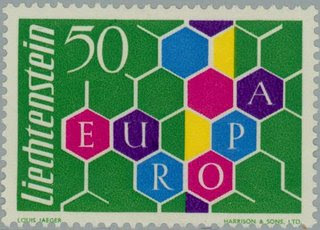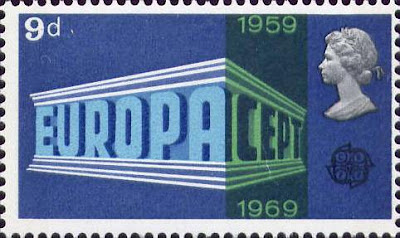 France
France16th April 1973 - common design "Post, telegraph & telephone"
Hôtel de ville de Bruxelles
design & engraving: Pierre Forget
printer: Imprimerie des timbres-poste et des valeurs fiduciaires (ITVF)
1973 was the last year Europa stamps were issued using a common design. The main reason of this change was the monotony of common designs issues among philatelists. Before the introduction of a common theme in 1974, the CEPT introduced a new rule in 1971, the right to issue a second stamp with a free subject as design. One country who used that new rule from the start was France. Between 1971 and 1973, France issued a second stamp depicting a famous building of a European city (Venice in 1971, Aachen in 1972, Brussels in 1973).
I decided to focus on the 1973 stamp representing the town hall of Brussels. This stamp is part of a 2 stamps set, the other stamp depicting the common design made by the Norwegian artist Leif Frimann Anisdahl. This French stamp has been designed and engraved by the French artist Pierre Forget. He designed many stamps during his live for France, Monaco and Andorra. Besides this issue he is also the author of the 1975 french Europa issue. In 1979 he received the prize for the World's best stamp (!) for for the International year of the child french stamp. You can have a look at all Pierre Forget's stamps on this French stamp database: Phil-Ouest
The town hall of Brussels is a beautiful Gothic building from the Middle Ages. It is located on the Grand Place (market square) in the heart of Brussels' old town. This Saturday this building will be the showcase of the ceremony of the first "Best Europa stamp - Jury prize" ! PostEurop decided to give two Best Europa stamps prizes each year from now on: The Best Europa stamp will be selected as usual through the internet voting (held earlier this year on PostEurop's website) and the winner will be announced in October this year.
Besides this elder prize, a jury of 8 members composed by stamp designers, former philatelic managers and myself will select the stamp which will receive the first "Best Europa stamp - Jury prize" ! Next week you'll know who is the winner !
source of the images : http://www.ibolli.it/indexes/cept/index.php






